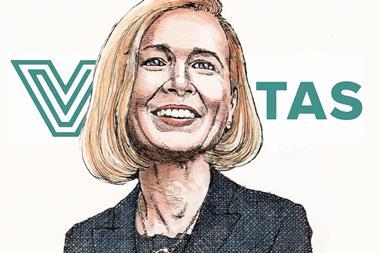UK- UK foundations are failing to maximise their financial performance and social impact due to an over-cautious approach to investing and a lack of appreciation of the supremacy of their charitable aims, according to a new report.
Richard Jenkins, a consultant specialising in the governance and management of charities and foundations and the report's author, said: "Unlike pension funds, which have to gear their investing towards the quantifiable liabilities of their members, charitable foundations have a very different relationship with their beneficiaries.
"Foundations can shrink or expand their range of beneficiaries within the limits set by their deed."
But an emphasis on making the maximum risk-adjusted return on investments, coupled with the possibility of investing in products not designed for them, could keep them from getting the most out of their assets.
"For foundations," Jenkins added, "the money and assets are a means to an end, and not an end in themselves. There could be more questioning about using different approaches to achieve charitable impact."
'The Governance and Financial Management of Endowed Charitable Foundations' report is based on interviews with a number of endowed foundations and aims to distil their experience in tackling investment and legal issues into guidance for the foundation sector as a whole.
There are about 12,000 grant-making foundations in the UK. The largest 900 endowed foundations in England and Wales have assets valued at £48.5bn (€59bn) - more than half the total assets of the UK voluntary sector.
Because of their flexibility in deciding who their beneficiaries are, as well as deciding their annual levels of expenditure, many foundations could tolerate greater volatility and work to longer investment horizons, Jenkins said.
According to the report, some endowed foundations calculate an annual spend target based on their historical total returns, rather than on forward projections.
Using the long-term average value of the portfolio, rather than a yearly valuation, prevents spikes in valuations, leading to volatile grant spending.
Jenkins suggested a longer investment horizon could help achieve better performance.
"This means they can take more risk and reap greater rewards over a period of time," he said.
"Furthermore, foundations investing in a market largely geared to more short-term investors and using standard investment products may be getting products that are not quite right for them."
He also warned about the impact of inflation on beneficiaries' costs, as well as the value of the endowment.
"Keeping up with the markets isn't the point - keeping up with inflation usually is," he said.
The report highlighted the importance of using the entire balance sheet to achieve charitable goals - citing as an example the Nuffield Foundation investing in biotechnology funds.
As regards the use of outside experts, the report suggests that some trustees are perhaps too unquestioning in accepting advice.
"Some foundations report that legal advice can be presented as a set of instructions, rather than options for discussion," Jenkins said.
"Advisers give advice expecting it to be followed, in contrast with commercial organisations, where directors are often more willing to challenge them."
He said this could be because of a lack of confidence by foundation trustees.
"But only trustees can decide what is in the best interests of the charitable aims," he said. "This means they should question the experts, asking them to produce different scenarios."
David Emerson, chief executive at the Association of Charitable Foundations (ACF), which published the report, said: "In the longer term, the report will provide the opportunity for a renewed focus on the aims of foundations, and the effective management of these unique assets to achieve even greater public benefit."












No comments yet